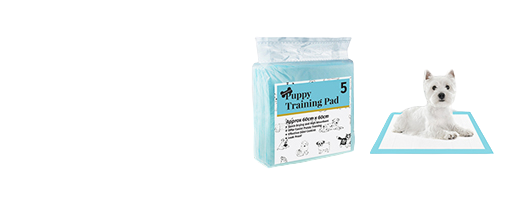
The Growing Challenge and Potential of Diaper Recycling
2025-03-05 21:31
Diaper Recycling Initiatives by Leading Companies
Several major hygiene product manufacturers have launched baby diaper recycling projects to explore the feasibility of large-scale waste reduction:
Procter & Gamble (P&G) has collaborated with a joint venture partner in Italy to develop a diaper collection and recycling system. The initiative aimed to process used baby diapers and adult diapers into reusable materials, but after years of trials, P&G acknowledged the limitations of the current technology in repurposing recycled diaper materials.
Kimberly-Clark conducted a trial recycling program in Australia, testing the effectiveness of diaper recovery and material separation for further use.
Ontex, a key player in the hygiene industry, has partnered with Woosh to develop a more easily recyclable diaper. Woosh has also introduced a “give-back” baby diaper in Belgium, delivering and later collecting used diapers for recycling.
Unicharm, one of Asia’s largest hygiene product manufacturers, has successfully implemented a diaper recycling process that repurposes recovered pulp into household items such as toilet paper and even new baby diapers.
Eco-Friendly Diaper Brands and Their Recycling Efforts
While multinational corporations continue to experiment with large-scale diaper recycling, several smaller eco-conscious brands have entered the market with sustainability as their primary mission. Brands such as Dyper and Pura have developed biodegradable baby diapers and adult diapers that minimize environmental impact. Pura, a U.K.-based baby diaper brand, recently announced the successful recycling of 200,000 baby diapers at a partner facility in Bristol, U.K.
These brands are not only focusing on recyclability but also exploring innovative ways to lessen the burden on municipal waste facilities, including the use of compostable materials and biodegradable alternatives for both baby diapers and adult diapers.
Barriers to Widespread Diaper Recycling
Despite these promising developments, the reality is that diaper recycling remains far from mainstream. Several key challenges continue to hinder large-scale adoption:
1. High Collection and Processing Costs
One of the biggest obstacles to diaper recycling is cost. Collecting and recycling disposable baby diapers and adult diapers is an expensive process that requires:
Specialized collection bins and transportation systems.
Advanced sorting and processing facilities.
The ability to separate and repurpose materials such as plastic, absorbent fibers, and adhesives.
As of now, diaper manufacturers are shouldering most of the burden of collection and processing, making it difficult for them to recoup their investment in recycling initiatives.
2. Technological Limitations
While advances have been made, finding new applications for recycled diaper materials remains a challenge. Adult diapers and baby diapers contain multiple layers of synthetic and organic materials that are difficult to separate efficiently. This complexity limits the potential for high-value material recovery and reuse.
3. Lack of Consumer Awareness and Participation
Even in regions where diaper recycling programs exist, participation rates are often low. Many consumers are either unaware of recycling programs or find it inconvenient to properly dispose of used baby diapers and adult diapers through specialized collection systems. Without widespread consumer engagement, recycling programs struggle to scale effectively.
Recent Advances and Promising Innovations
Despite these challenges, some companies remain optimistic about the potential for large-scale diaper recycling. Recent breakthroughs include:
Plastic Recovery for Composite Materials: Certain types of recycled plastic from baby diapers and adult diapers are now being used as composite materials to replace concrete and steel in construction applications.
Repurposed Cellulose Fibers: The absorbent core of diapers contains cellulose fibers, which can be repurposed for various uses, including pet litter, insulation materials, and agricultural nutrients.
Recycling Pulp for Paper Products: Some companies, such as Unicharm, have successfully converted recycled diaper pulp into new toilet paper and even fresh baby diapers and adult diapers.
Tarmac and Concrete Additives: Research has shown that cellulose fibers extracted from diapers can be used to reinforce materials such as concrete and tarmac, offering new possibilities for waste reduction in the construction industry.
The Role of Adult Diapers in the Recycling Discussion
While most discussions about diaper recycling focus on baby diapers, the increasing use of adult diapers presents another pressing challenge. With an aging global population, the demand for adult diapers is rising significantly, leading to increased waste production. Senior citizens, individuals with disabilities, and healthcare facilities rely heavily on disposable adult diapers, making them a major contributor to landfill waste.
Because adult diapers contain higher levels of absorbent materials and body fluids than baby diapers, they present additional recycling challenges. However, their growing market share means that sustainable solutions for adult diaper waste must be prioritized alongside efforts for baby diaper recycling.
Future Outlook and Potential Solutions
As the demand for baby diapers and adult diapers continues to grow, the need for viable recycling solutions will only become more urgent. Moving forward, several strategies could help improve the feasibility of diaper recycling:
1. Government and Industry Collaboration
Governments and hygiene product manufacturers must work together to develop policies and incentives that support diaper recycling initiatives. Tax incentives, subsidies for recycling programs, and investment in research could accelerate progress in this field.
2. Consumer Education and Participation
Raising awareness about diaper recycling programs and making participation more convenient can significantly improve recycling rates. Placing collection bins in accessible locations and offering incentives for returning used baby diapers and adult diapers could encourage consumers to engage in waste reduction efforts.
3. Expansion of Circular Economy Initiatives
Companies that manufacture baby diapers and adult diapers should explore circular economy models that integrate recycled materials into new products. This approach can help close the loop by ensuring that used diapers are repurposed rather than ending up in landfills.
Get the latest price? We'll respond as soon as possible(within 12 hours)















